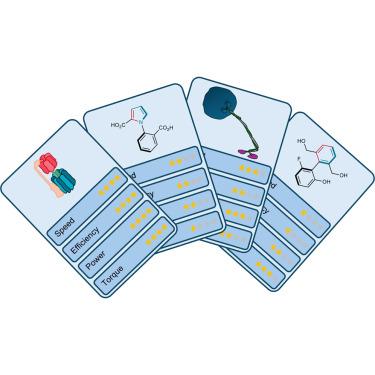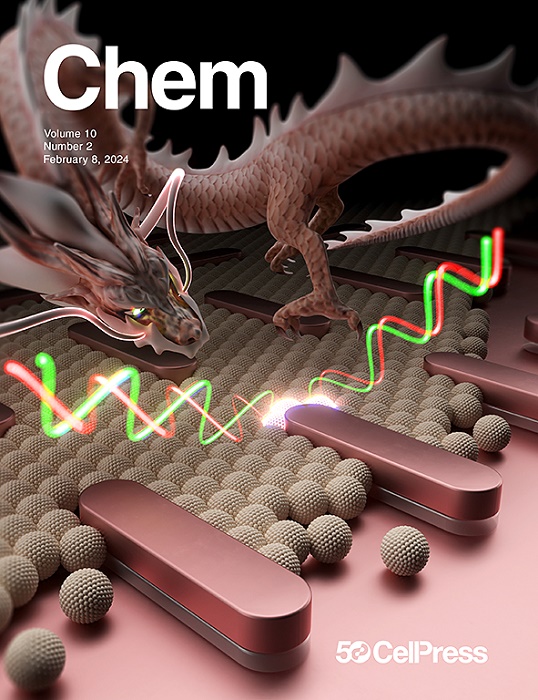催化驱动分子机械的结构-性能关系
IF 19.6
1区 化学
Q1 CHEMISTRY, MULTIDISCIPLINARY
引用次数: 0
摘要
化学燃料的分子马达是生命最基本过程的关键。近年来,从化学、生物学和物理学中获得的理论和实验见解已经导致了对催化驱动运动机制的分子基础的理解。与生物发动机不同的是,生物发动机的进化包袱和复杂性往往使我们无法完全弄清其机制特定方面背后的原因,而人工小分子发动机的运作机制是完全可知的。在这里,我们概述了关键性能指标,如速度、失速力和燃油效率,如何与不同的结构和机械特征相关,并将分析与生物和小分子示例联系起来。这为功能性化学燃料分子机械提供了合理的设计原则,并与生物分子机械进行了基准比较。我们已经提供了一个交互式可视化工具作为Jupyter笔记本,它突出显示了关键性能指标是如何变化的,并依赖于化学燃料的潜在动力学:https://github.com/JoaquinBaixerasBuye/Performance-Characteristics-of-Motors。本文章由计算机程序翻译,如有差异,请以英文原文为准。

Structure-performance relationships for catalysis-driven molecular machinery
Chemically fueled molecular motors are key to life’s most fundamental processes. In recent years, theoretical and experimental insights garnered from chemistry, biology, and physics have led to an understanding of the molecular basis of catalysis-driven motor mechanisms. Unlike their biological counterparts, for which evolutionary baggage and complexity often preclude a complete untangling of the reasons behind particular aspects of their mechanisms, artificial small-molecule motors operate with mechanisms that are entirely knowable. Here, we outline how key performance indicators, such as speed, stalling force, and fuel efficiency, are related to distinct structural and mechanistic features, contextualizing the analysis with both biological and small-molecule examples. These provide rational design principles for functional chemically fueled molecular machinery and benchmarking comparisons with biomolecular machinery. We have made available as a Jupyter notebook an interactive visualization tool that highlights how the key performance indicators change and depend upon the underlying kinetics of chemical fueling: https://github.com/JoaquinBaixerasBuye/Performance-Characteristics-of-Motors.
求助全文
通过发布文献求助,成功后即可免费获取论文全文。
去求助
来源期刊

Chem
Environmental Science-Environmental Chemistry
CiteScore
32.40
自引率
1.30%
发文量
281
期刊介绍:
Chem, affiliated with Cell as its sister journal, serves as a platform for groundbreaking research and illustrates how fundamental inquiries in chemistry and its related fields can contribute to addressing future global challenges. It was established in 2016, and is currently edited by Robert Eagling.
 求助内容:
求助内容: 应助结果提醒方式:
应助结果提醒方式:


